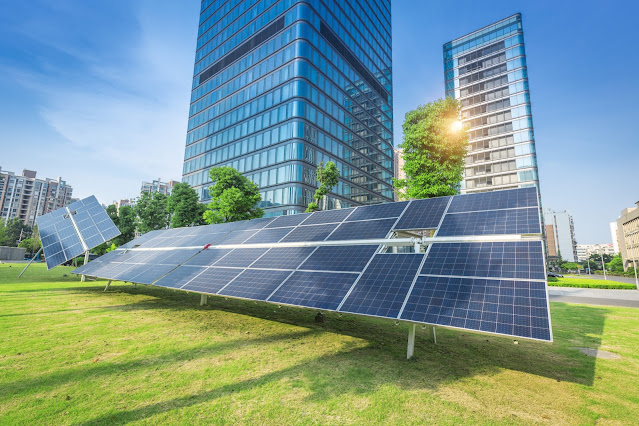Building for a Sustainable Future: The Rise of Green Construction
 |
| Green Construction |
Green construction, also known as sustainable or eco-friendly construction, is an innovative approach to building that focuses on reducing the environmental impact of construction projects. This concept aims to create structures that are energy-efficient, use renewable materials, and promote a healthy living environment for occupants. Green construction has gained significant traction in recent years as the world recognizes the urgent need to address climate change and preserve our natural resources.
One of the key aspects
of green construction is energy efficiency. Buildings are responsible for a
significant portion of energy consumption and greenhouse gas emissions. By
incorporating energy-efficient design principles, such as proper insulation,
high-performance windows, and efficient heating, ventilation, and air
conditioning (HVAC) systems, green buildings can significantly reduce energy
consumption and carbon footprint. Additionally, renewable energy sources like
solar panels or wind turbines can be integrated into the building's design to
generate clean, renewable power.
Another essential
element of green construction is the use of sustainable materials. Traditional
construction relies heavily on non-renewable resources such as concrete and
steel, which have a substantial environmental impact during extraction and
production. In contrast, green construction promotes the use of recycled and
renewable materials like reclaimed wood, bamboo, and recycled steel. These
materials not only help reduce waste and conserve natural resources but also
have lower carbon footprints compared to their conventional counterparts.
Green
Construction emphasizes the importance of indoor
environmental quality. Traditional buildings often suffer from poor indoor air
quality due to inadequate ventilation and the use of toxic building materials.
In contrast, green buildings prioritize healthy indoor environments by using
low-emission paints, formaldehyde-free insulation, and proper ventilation
systems that enhance air circulation and filtration. This focus on indoor air
quality contributes to the well-being and productivity of occupants while
reducing the risk of respiratory ailments.
Water conservation is
also a crucial aspect of green construction. Buildings consume vast amounts of
water for various purposes, including irrigation, plumbing, and cooling
systems. Green construction implements strategies such as rainwater harvesting, grey water recycling, and the installation of water-efficient fixtures to
minimize water consumption. These measures not only reduce the strain on local
water resources but also contribute to long-term cost savings for building
owners.
Green
Construction is not limited to new buildings; it can
also be applied to the renovation and retrofitting of existing structures. By
improving insulation, upgrading HVAC systems, and incorporating
energy-efficient technologies, older buildings can be transformed into
sustainable and environmentally friendly spaces. This approach helps extend the
lifespan of buildings, reduces waste from demolition, and provides economic
benefits in the form of energy savings and increased property values.
Green construction is a
holistic approach to building that combines energy efficiency, the use of
sustainable materials, indoor environmental quality, water conservation, and
the transformation of existing structures. By implementing these practices, we
can create buildings that not only minimize their impact on the environment but
also provide healthier and more comfortable spaces for occupants. As the world
continues to prioritize sustainability and combat climate change, green
construction will play an increasingly vital role in shaping the future of the
construction industry.



Comments
Post a Comment